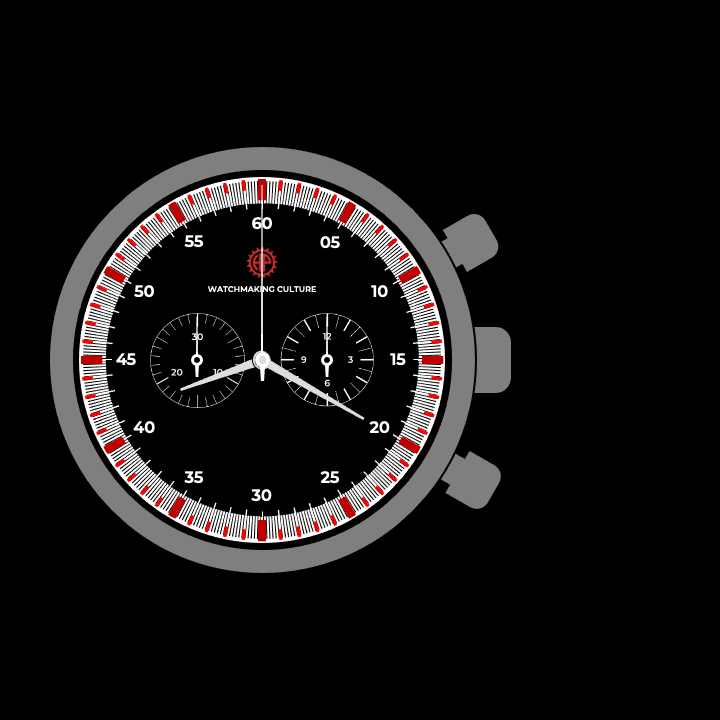FLYBACK CHRONOGRAPH
The flyback chronograph has the same appearance as a double-pusher chronograph. It is also equipped with two pushers, which perform the same functions as a conventional double-pusher chronograph but with one key difference: the reset pusher also includes the flyback function.
As its name suggests, this type of chronograph is closely linked to aviation history. Since the first powered flight by the Wright brothers in 1903, aviation has advanced at a remarkable pace. However, until the end of World War II, piloting and navigation aids were almost nonexistent. Accurate time measurement was crucial for determining position and ensuring precise navigation.
During approach phases, a pilot had to perform multiple consecutive time measurements while simultaneously executing delicate manoeuvres. For example, flying 2 minutes 30 seconds at 60 knots with a tailwind, then 45 seconds at 50 knots with a crosswind, followed by 20 seconds at 50 knots into a headwind before beginning the descent. Any inaccuracy in measuring these intervals could have serious consequences on the timing and location of the landing. Each successive time measurement had to start at an exact moment, marking the beginning of a new manoeuvre. If the chronograph was still running from a previous measurement, the time required to stop, reset, and restart the chronograph introduced a delay, distorting the next measurement. The flyback function eliminates this issue. While the chronograph is running, a single press of the reset pusher simultaneously stops, resets, and restarts the chronograph. All three operations occur instantly and in unison, allowing for seamless and precise successive timing.

While the practical significance of this complication in its original aviation purpose is immediately clear, it is no longer critical in modern times. However, the flyback function offers a notable advantage over a standard two-pusher chronograph. If the user accidentally presses the reset pusher while the chronograph is running, there is no risk of damaging the mechanism (a vulnerability present in conventional chronographs).
The first flyback chronographs appeared around 1930. However, an earlier chronograph signed by Hermann Bovet (unrelated to the Bovet watchmakers of Fleurier) already featured a flyback function, even though it was not explicitly mentioned. The patent for this chronograph was filed in 1888, fifteen years before the first powered flight.
Remarkably, the flyback mechanism in Bovet’s chronograph was developed by chance. The original patent focused on using the 24-hour counter and 60-minute chronograph counter as a second-time zone indicator. It was purely by chance, and in the process of refining the subject of his chronograph patent — which focused on using the 24-hour counter and 60-minute chronograph counter as a second time zone indicator — that the flyback mechanism, allowing a seamless transition between functions, was conceived. As aviation did not yet exist at the time, this innovation was never officially claimed.
